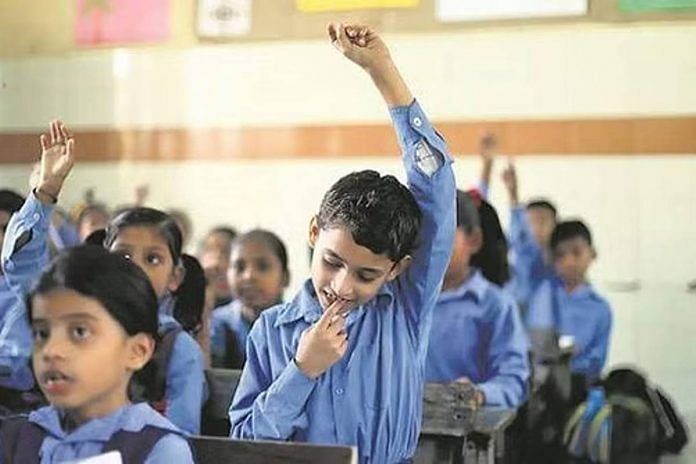New Delhi: The Central Board of Secondary Education (CBSE) Friday issued guidelines to schools for following the National Curriculum Framework (NCF) for the foundational stage (Preschool to Class 2, for 3- to 8-year-olds). The schools have been asked to enhance infrastructure in terms of classrooms, and follow up on other requirements like health and safety guidelines to implement the curriculum.
The board had earlier this week said that it was adopting the NCF at foundational stage in its schools for the 2023-2024 academic session. The latest guidelines will help the schools in adoption of the curriculum.
The NCF was developed by the National Council for Educational Research and Training (NCERT) as part of the new National Education Policy released in 2020. It suggests that no books be used for children in preschool, and that teaching for this age group be conducted through toys, stories and activities.
According to the CBSE guidelines released Friday, “each child shall have an annual physical examination by a competent physician, including an appropriate vision-screening, audio-testing and other tests as deemed necessary”.
They add that identification of any special needs should be made at this time.
“In the event of a medical emergency, the head of the school shall be responsible for securing all possible medical care and informing the parents/guardian. No medication shall be given to children except by order of a physician,” they say.
Talking about building norms, the guidelines state that classrooms for foundation stage shall be on the ground or first floor of a building, properly ventilated, clean, sanitary and dry. They should be fitted with shielded electric lights/bulbs to prevent glare. Classroom furniture should be free from sharp concrete edges, preferably with rounded corners.
All concrete floors used by children should be covered with a safe and smooth material, and non-toxic paints and materials should be used, add the guidelines.
Talking about the play area, the guidelines suggest that it should be easily reachable from the classroom and the toilet, and be free of hazards like sharp edges. Play area for the entire school should be a minimum 10,000-sqft open playground.
Schools must have appropriate knowledge of disaster management norms, i.e. emergency evacuation procedures in place (for events such as) terror attacks, earthquakes and other natural disasters, according to the guidelines.
“In addition to the existing safety norms of CBSE, schools must take all possible steps to preclude any kind of punishment which could adversely affect a child’s well-being,” the guidelines add.
Talking about the curriculum, they state that “each school shall keep evidence that it will maintain a curriculum and an educational programme based on NCFFS (National Curriculum Framework Foundational Stage) 2022”.
In addition to activities conducted in the classroom, the guidelines suggest inclusion of drama, creative art, visual and performing arts, large muscle activities, participation in discussions and simple games and short excursions to nearby places of children’s interest.
For the age of admission, the guidelines state that “a school shall not admit a child who is younger than 3 years of age to the first year of Balvatika (preschool)”.
(Edited by Nida Fatima Siddiqui)
Also Read: From counting 1-10 to telling time, what Modi govt says your kids should learn from age 5 to 9



